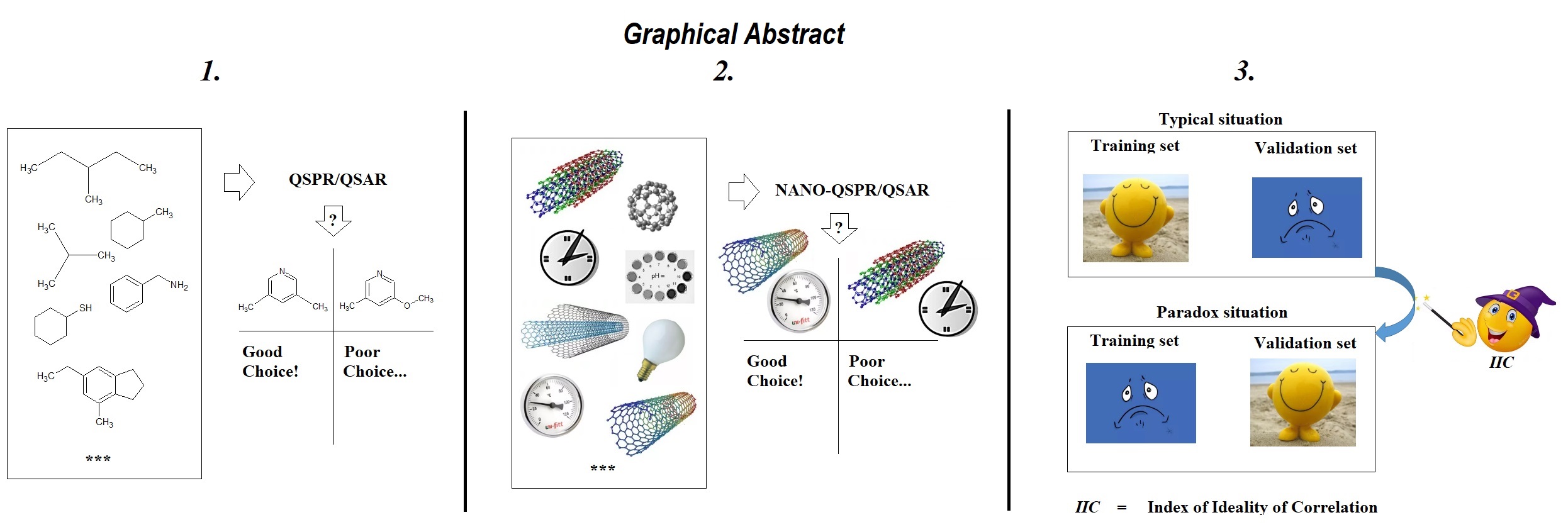welcome!
CORAL software/databases: QSPR/QSAR analysis for substances represented by Simplified Molecular Input-Line Entry System (SMILES) by the Monte Carlo method.
The CORAL software has rare enough quality: this free software is generating special optimal descriptors and building up models, i.e. the involving of other programs is not necessary.
CORAL software-project publications:
Scholar_Google/ Citations/ List_Works
The CORAL software: Why to use? How to use?
No money! Only thinking...

The web-site contains QSPR/QSAR models.
One can use these models for prediction of endpoint values for external substances (these should be similar to substances involved in the models) as well as these can be used as templates to build up new models using other data in the same format.
The above models are represented
(i) in INTRODUCTION;
(ii) in downloadable CORALSEA.zip;
(iii) at site VEGAHUB, you can access a series of QSPR/QSAR models (https://www.vegahub.eu/portfolio-item/coral/).
The list of the models QSPR/QSAR:
-enthalpy of formation from elements for organometallic compounds;
-toxicity towards bee;
-mutagenicity (TA98);
-toxicity in rats (LD50);
-toxicity towards Daphnia magna;
-models for Mutagenicity TA98 and TA100 caclulated with so-called "semi-optimal" descriptors";
-enthalpy of formation from element for inorganic compounds (special version of the program);
-anti-sarcoma activity;
-rate constants of hydroxyl radical reaction;
-toxicity in rats (organic compounds without aromatic fragments);
-anti-malaria agents.
The list of the models Nano-QSPR/ Nano-QSAR:
-membrane damage by means of titanium nanoparticles under various conditions which are represented by so-called quasi-SMILES;
-bioavailability of nanoparticles (ZnO, CuO, Co3O4, and TiO2);
-model of cell viability;
-toxicity of nanoparticles (ZnO, CuO, Co3O4, and TiO2) to E. coli bacteria;
-dispersibility of graphene in various solvents;
-mutagenicity of fullerene.
If you are looking for information on predictive models for nanomaterials, you can visit also web-sites:
Interdisciplinary Center for Nanotoxicity
S2NANO: Safe & Sustainable Nanotechnology
The list of the models built up with using new criterion for the predictive potential named as Index of Ideality of Correlation (IIC):
-skin permeability;
-mutagenic activity in Salmonella typhimurium TA98+S9;
-toxicity towards Fathead minnow;
-models for glass transition temperatures of polymers;
-toxicity to algae.
The CORAL software has been involved to solve tasks related to projects of DEMETRA (2003-2006), CAESAR(2006-2009), ANTARES (2009-2011), NanoBRIDGES (2011-2013), CALEIDOS (2013-2015), NanoPUZZLES (2013-2015), PreNanoTox (2013-2015), PeptiCAPS (2015-2018), LIFE-COMBASE (2017-2019); LIFE-VERMEER (2018-2022); LIFE-CONCERT (2018-2022); EU-ToxRisk (2016-2022); EU-funded ONTOX project (2021-2026) and others.
